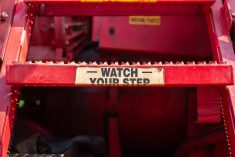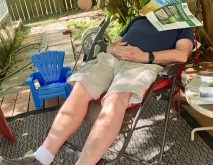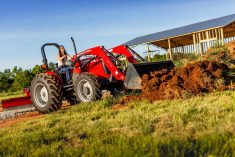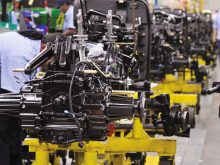A couple we’ll call Frank, 72, and his wife Helen, 71, live on a farm in southwestern Manitoba. They have 486 acres with mixed grains and cattle. Their present income — Frank’s Canada Pension Plan payments of $3,680 per year, Helen’s CPP benefit of $2,400 per year, two Old Age Security payments totaling $17,000 per year, and farm net income of $75,000 per year — adds up to total pre-tax passive income of $98,080. They figure they will need $48,000 per year after tax in retirement — a problem if their farm income ends with sale of the farm.
Read Also

Gentle treatments for pain in the neck
Heading toward year-end, people unknowingly tense up against the cold and busyness, causing neck pain that can often be treated with appropriate support and gentle mobility, athletic therapist Kathlyn Hossack says.
Their plan: retire as soon as possible, provided they have enough money from their capital, OAS and CPP to make it work. They figure that with their combined financial savings of $10,000 cash, $250,000 in registered retirement income funds (RRIFs) and $55,000 in tax-free savings accounts (TFSAs), plus farmland worth an estimated $2.7 million, $175,000 of equipment and $150,000 of buildings, they could service $260,000 of a land mortgage that costs them $4,500 per month. The mortgage, now 4.5 per cent, should be paid off in five and a half years.
Farm Financial Planner asked Colin Sabourin, a certified financial planner with Harbourfront Wealth Management in Winnipeg, for guidance. He notes there will be problems. He estimates Frank and Helen, with only $55,000 in their TFSAs available for withdrawal, they would have to make additional withdrawals from their RRIFs. In order to net after-tax $30,000 per year, they would have to withdraw $42,000 per year from the RRIFs.
Those RRIFs are currently locked into GICs (guaranteed investment certificates) that pay 4.25 per cent per year. With loans paid off, CPP, OAS and rental income would cover their day-to-day expenses, Sabourin explains.
They could raise more cash by selling equipment, but that would be problematic, he adds; Frank and Helen have depreciated the equipment. Their capital account is down to $25,000. Thus, a sale at $175,000 would lead to taxable income of $150,000.
That income, even if split between Helen and Frank, would lead to an OAS clawback for a year. Their total income would jump to $235,360. If split evenly, they would each have taxable incomes of $117,680. The OAS clawback starts at $90,997 in 2024. Every dollar of taxable income over that point costs an additional 15 cents tax until they have lost all their OAS. That means Frank and Helen would lose $8,000 of OAS.
That would leave them with $100,000 after clawback and taxes. That could go to their TFSAs. Each has $50,000 of room. Their RRIFs could continue growing, tax-deferred, for eventual and possibly negotiable paydown of their remaining loan.
Frank and Helen do not want to sell their farmland. The cash they raise would end their cash crisis and allow for an inheritance for their two adult children.
It’s a strain, but there is that $260,000 debt with five years of payments to maintain. If the couple rents their land at $100 per acre, it could generate $48,600 which, with OAS and CPP, would cover their estimated retirement costs based on $23,260 CPP and OAS plus proceeds of investments in their $315,000 financial assets. As Sabourin notes, tax-efficient management will allow the couple to keep the farm.
“This plan is feasible, based on sale of farmland at $2.7 million or rental at $48,600 per year before tax,” Sabourin says. “There should be enough income to provide breathing room to make land and capital sale decisions without pressure. A few more years of delay would allow more savings to TFSAs.”
Selling some of their unused farm equipment would add investable cash, Sabourin adds. However, if interest rates were to rise a few per cent before debt is eliminated, the plan to postpone the sale would be in jeopardy — “so better sooner than later,” he concludes.















